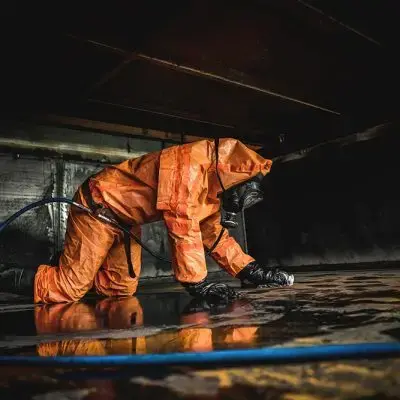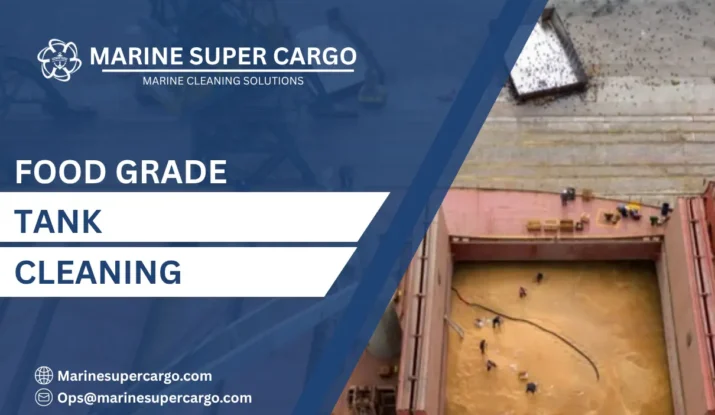Transporting wine and edible products demands the highest hygiene standards in maritime cargo operations. Food grade tank cleaning requires meticulous attention to detail, specialized procedures, and absolute commitment to preventing contamination. Unlike petroleum or chemical cargoes, edible liquid transport involves strict health regulations where even microscopic residues can render entire shipments unfit for human consumption.
At Marine Super Cargo, we deliver exceptional food grade tank cleaning services that meet international health standards and industry certifications. Our specialized teams understand that food grade tank cleaning goes beyond removing visible residues—it requires achieving bacteriological cleanliness and odor-free conditions throughout cargo spaces. Wine shipments, fruit juices, vegetable oils, and other edibles demand pristine tank conditions that protect product integrity.
Regulatory Framework and Certification
IMO and Health Authority Requirements
The IMO recognizes special requirements for vessels carrying edible products, though primary jurisdiction falls under national health authorities. Food grade tank cleaning must satisfy standards established by the FDA, EU Health Regulations, and destination country requirements. Vessels carrying wine and edibles typically hold certificates from classification societies confirming suitability for food transport.
MARPOL regulations govern environmental aspects of cleaning operations, requiring proper waste management. All washings from food grade tank cleaning must be handled according to applicable annexes, though discharge restrictions prove more stringent for food-contact surfaces.
Industry Certification Standards
Major certification bodies including SGS, Bureau Veritas, and Lloyd’s Register provide independent verification of tank cleanliness. Food grade tank cleaning must achieve standards specified in these certification programs before surveyors issue fitness certificates. Marine Super Cargo maintains partnerships with leading inspection agencies ensuring rapid certification turnaround.
Pre-Cleaning Assessment and Preparation
Before commencing food grade tank cleaning, thorough assessment identifies previous cargo types and potential contamination sources. Tanks previously carrying non-food products require intensive preparation protocols. The ship’s cargo history determines the cleaning methodology and verification procedures necessary to achieve food grade standards.
All equipment contacting cargo—including pumps, pipelines, valves, and manifolds—undergoes inspection and dedicated cleaning. The bow, stern, and overhead sections receive particular scrutiny as these areas often harbor hidden residues that compromise cleanliness.

Multi-Stage Cleaning Protocol
Initial Rinsing and Bulk Removal
The first stage of food grade tank cleaning removes gross residues using potable water at appropriate temperatures. Complete drainage eliminates standing water that could harbor bacterial growth. All tank surfaces including the port and starboard bulkheads, frames, and bottom plating receive thorough preliminary flushing.
Detergent Washing Phase
Food-safe alkaline detergents specifically formulated for edible product applications provide deep cleaning action. These specialized agents remove organic residues, oils, and proteins while maintaining compatibility with stainless steel and approved tank coatings. Hot water at 60-70°C enhances detergent effectiveness without damaging protective coatings.
High-pressure Butterworth machines deliver systematic coverage, ensuring detergent solution contacts every surface. Multiple washing cycles eliminate residues from complex structural areas, heating systems, and tank appurtenances. Marine Super Cargo employs advanced cleaning techniques that optimize resource usage while maintaining superior results.
Sterilization and Sanitization
Following detergent washing, food grade tank cleaning requires sanitization using approved agents. Steam sterilization or chemical sanitizers eliminate bacterial contamination throughout the cargo space. This critical phase ensures microbiological safety meets health authority requirements for human consumption products.
Temperature control during sterilization proves essential—insufficient heat fails to eliminate pathogens while excessive temperatures may damage coatings or seals. Thermal mapping verifies uniform temperature distribution across all tank areas including the forward and aft sections.
Final Rinsing with Potable Water
Multiple rinses using certified potable water remove all traces of cleaning agents and sanitizers. Water quality must meet drinking water standards established by the World Health Organization. Testing confirms the absence of detergent residues, chlorine compounds, and any substances that could affect product taste or safety.
Inspection and Testing Procedures
Visual Inspection Standards
Comprehensive visual inspection verifies cleanliness throughout the cargo space. Inspectors examine all surfaces under proper lighting, checking bulkheads, structural members, heating coils, and tank bottom for residues, staining, or odors. The inspection proceeds systematically from overhead areas downward, ensuring no areas escape scrutiny.
Laboratory Testing Requirements
Wall wash samples collected from multiple tank locations undergo laboratory analysis for bacterial contamination, pH, odor, and residual substances. Testing protocols follow internationally recognized standards ensuring results meet health authority requirements. Sample collection includes areas along the port and starboard sides, tank corners, and heating coil surfaces.
Odor Testing Protocols
Wine and beverage transport requires absolutely odor-free conditions. Trained inspectors conduct organoleptic testing, verifying the absence of any detectable odors that could taint products. This subjective assessment proves critical as even approved cleaning agents can leave residual odors if insufficiently rinsed.
Documentation and Traceability
Complete documentation records every aspect of food grade tank cleaning operations. Records include cleaning products used, water sources, temperatures maintained, washing durations, test results, and inspector certifications. This documentation satisfies SOLAS safety management requirements and provides traceability during health authority audits.
Marine Super Cargo maintains comprehensive quality management systems ensuring full traceability and regulatory compliance throughout operations.
Maintaining Food Grade Status
Once achieved, food grade status requires vigilant maintenance. Tanks approved for edible products should transport only compatible cargoes avoiding cross-contamination risks. Between voyages, tanks must remain sealed and protected from atmospheric contamination until loading commences.
Frequently Asked Questions
Q1: How long does food grade tank cleaning require?
Complete operations typically take 36-48 hours including washing, sterilization, testing, and inspection for certification.
Q2: Can tanks previously carrying chemicals be converted to food grade?
Yes, but requires intensive cleaning, possible coating renewal, and extensive testing to achieve health authority approval.
Q3: What water quality standards apply to food grade tank cleaning?
Water must meet WHO potable water standards with testing confirming absence of contaminants and microbiological safety.
Q4: Why is odor testing important for wine transport?
Wine readily absorbs odors from tank environments, potentially ruining entire cargoes worth millions of dollars.
Q5: How often must food grade tanks be recertified?
Most certification bodies require annual recertification with inspection before each food cargo loading.
Trust Marine Super Cargo for superior food grade tank cleaning that protects product quality and ensures regulatory compliance.


